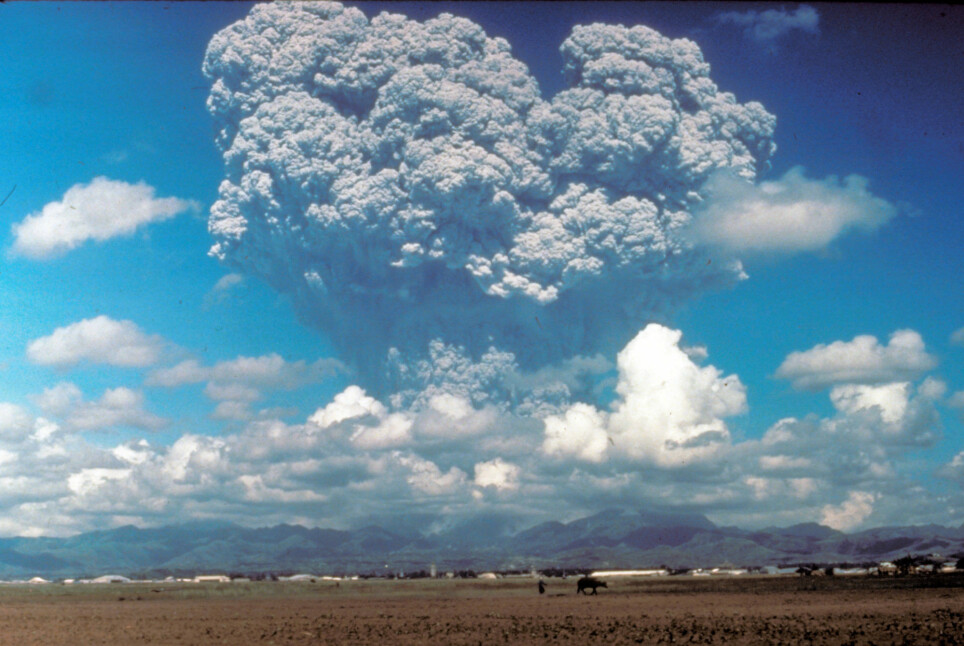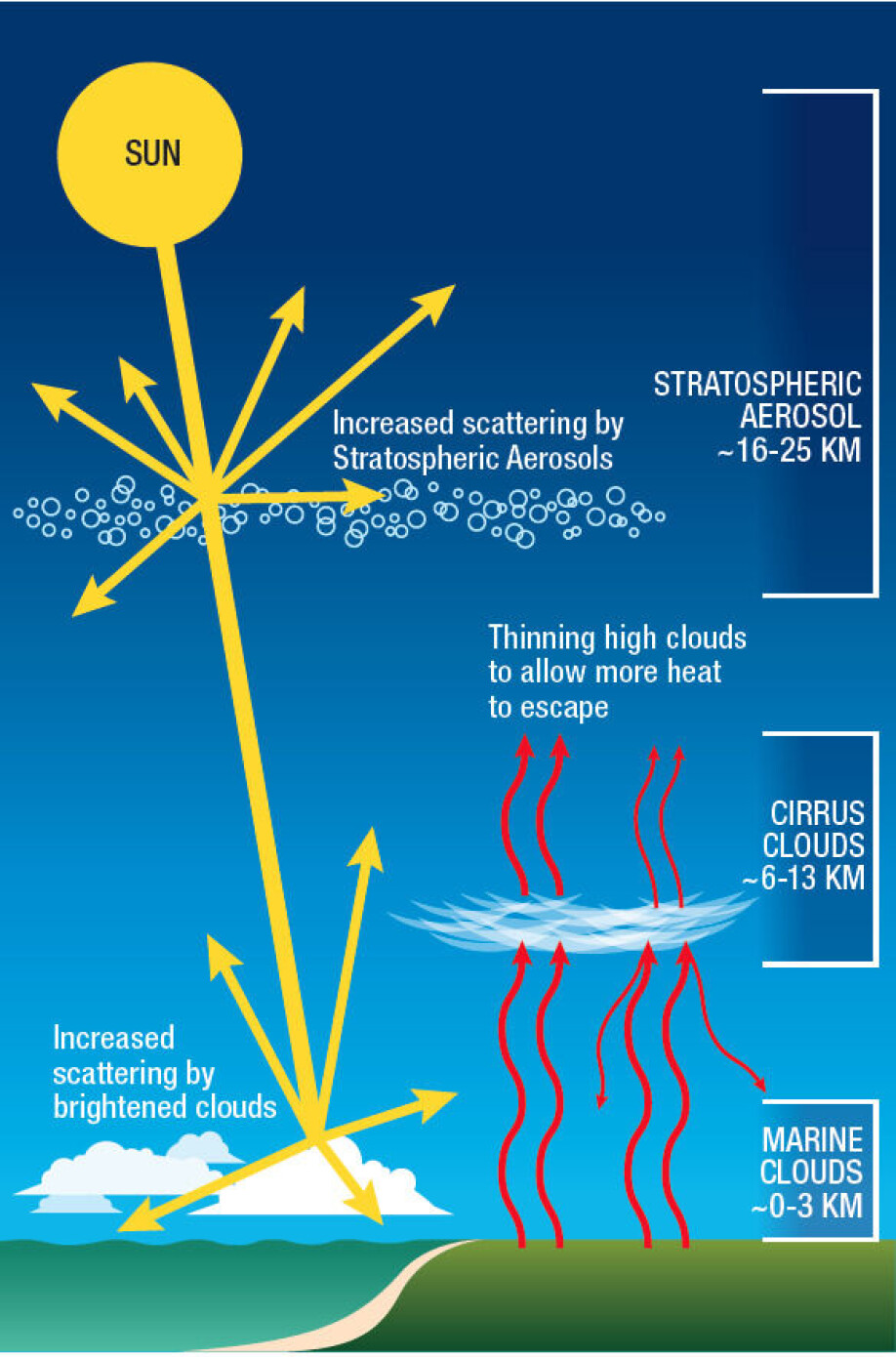THIS ARTICLE/PRESS RELEASE IS PAID FOR AND PRESENTED BY NTNU Norwegian University of Science and Technology - read more

Blocking the sun to control global warming
It sounds like something out of a bad science fiction movie — artificially blocking sunlight to keep global warming from overheating the Earth. Nevertheless, a small cadre of researchers is studying the option — so that if humankind ever needs to use it, it will be an informed decision.
The latest report from the Intergovernmental Panel on Climate Change (IPCC), released in early August, made it clear that humankind needs to take immediate action to curb global warming. There’s hope that international climate talks in Glasgow this November may finally result in strong enough greenhouse gas emission limits to make a difference.
But just in case, an international group of researchers, including NTNU’s Helene Muri, has been studying a technology called solar geoengineering as an action of last resort.
Solar geoengineering is exactly what it sounds like, where various technologies are used to block sunlight and cool the Earth. Typically, three main approaches — none of which is currently technologically ready — are being studied for their ability to block sunlight and lower ground temperatures.
Muri, a senior researcher at the university’s Industrial Ecology Programme, has spent the last decade looking at how solar geoengineering might — or might not — work.
In June, she and her colleagues from the US, China and the UK published a paper in Nature Food that used computer models to assess solar geoengineering’s potential effects on agriculture in a high emission world. Their findings sparked international media coverage because they found that solar geoengineering in those scenarios could actually have a positive effect on crop growth from higher humidity.
Other studies that used simpler models found either a limited effect or losses for rainfed crops, since there could be less rainfall with the lower temperatures that come with solar geoengineering – depending on the way the technology is used to cool the Earth.
Now, as the world prepares to debate limits on CO2 emissions during November’s climate talks, it’s worth a look at the measures being examined by researchers like Muri — and an assessment of their possible risks and pitfalls.

Band-aid or tourniquet?
Any discussion of solar geoengineering has to acknowledge that it’s far from a perfect fix, Muri says.
“Solar geoengineering, no matter how well we do it, will never perfectly offset the effects of climate change,” she said.
The problem is that solar geoengineering may cool the Earth, but doesn’t get rid of the excess carbon dioxide and other heat-trapping substances in the atmosphere. And carbon dioxide does more than simply warm the Earth.
It fertilizes plants — which could be a good thing — but because much of it gets dissolved in sea water, it makes the oceans more acidic.
“There will always be things that you cannot fix with solar geoengineering, specifically ocean acidification,” she said. “A more acidic ocean affects everything in the food chains in the ocean, including coral reef diebacks, which is terrible for the ecosystem as a whole. That becomes evident as soon as you really start looking at it. There is no one silver bullet. It’s not the one solution that can fix everything.”
Muri says that any discussion of geoengineering also assumes that CO2 emissions will be dealt with at the same time any solar geoengineering is deployed.
Alan Robock, a climate researcher at Rutgers University in the US who is leader of an international cooperative research project of called GeoMIP, of which Muri is a part, agreed.
“It’s not a solution to global warming at its best. If it were ever used as a band-aid — or a tourniquet — it doesn’t solve the root problem,” he said.

Many unknowns, but still need to know
Muri says there is still much that is unknown about solar geoengineering, in part because most climate change research is focused on issues other than geoengineering.
“Just to put the level of research into context, for the last 5 to 10 years, there have been about 100 to 130 papers published per year on solar geoengineering,” she said. “When it comes to climate change it’s more like 30,000 papers per year over that period. The important thing is that it is a vastly, hugely different amount. It’s just a minority of effort and funding going into researching solar geoengineering.”
At the same time, she says, the US National Academies of Sciences, Engineering and Medicine published a comprehensive report on solar geoengineering that said the urgency of the risks posed by climate change meant that 'the U.S. should pursue a research program for solar geoengineering — in coordination with other nations, subject to governance, and alongside a robust portfolio of climate mitigation and adaptation policies.' The report recommended US funding of about $100 million-$200 million over the first five years.
Muri says that climate researchers’ main focus needs to remain on climate change itself, because society needs to know what the effects will be, how to adapt, and how to mitigate these effects. Nevertheless, she says, researchers do need to study solar geoengineering to see if it could be helpful as a stopgap measure while the world transitions away from fossil fuels.
“The question is if it could contribute to reduce some level of harm from climate change for a certain period, whilst we are trying to sort out both emissions of CO2 and concentrations of CO2 within the climate system,” she said. “Nobody sees it as a one and only solution, but it’s not clear yet whether it could be helpful or not. At the moment, there are too many unknowns and uncertainties to really say whether it’s overall a good idea or a bad idea.”
Robock agrees.
His group at Rutgers University is “doing research to evaluate the risks of doing solar geoengineering versus the risks of not doing it. And that’s the information that governments will need in the future to decide whether or not to ever implement it,” he said. “I spend millions of dollars of taxpayer money to do my research. And if I find a danger to society, it’s my obligation to warn people about it.”

A cooler Earth but potentially changed monsoons
Robock’s group is looking at the benefits and risks of using stratospheric aerosols to cool the planet, which emulate a volcanic eruption.
“Benefit number one would be, if you could do it, you would reduce global warming, and many of its risks,” Robock said. “We know that if you could get the aerosols up there, it would work because it doesn’t involve creating or affecting clouds in the troposphere, it’s just putting a shield up there to reflect sunlight.”
Researchers know that big volcanic eruptions, like the 1991 eruption of Mount Pinatubo, cooled the Earth. But these natural solar geoengineering experiments have also given them the ability to observe other pitfalls, Robock said.
“We know that there were other things that were not so good; (the eruption) destroyed ozone,” he said. “And you actually get a huge reduction of monsoon rainfall. We observed that after Mount Pinatubo.”
Volcanic eruptions only cause the Earth to cool for a year or two, because the aerosols eventually dissipate. However, if stratospheric aerosols were to be used as solar geoengineering to cool the Earth, their use could alter monsoon rainfall for a much longer period, which could result in famine, Robock said.
Some modeling has shown that solar geoengineering could in fact have less of an impact on monsoons than global warming, but nevertheless, the issue illustrates just how difficult making these predictions are.

Who decides?
Then there are issues such as insect-borne diseases, like malaria, Muri points out. How would solar geoengineering affect mosquito populations and the potential spread of malaria?
And what if a failure to cut CO2 emissions and reduce global warming results in devastating heat waves, where thousands of people die? Is that enough to outweigh other negatives?
“There are still so many areas where we don’t know enough,” she said.
Finally, there are areas that are far outside of what climate scientists who study the physical effects of climate change can predict. The biggest question is who decides what the temperature of the planet should be?
The political decision making surrounding solar geoengineering is daunting, if you consider the difficulty the nations of the world have already had in trying to agree to curb CO2 emissions, Muri said.
“How would one deal with geoengineering in terms of geopolitics and governance?” Muri said. “We need to develop regulations. Who sets the thermostat and how would you go about agreeing on something like that?”
In a companion piece to Muri and her colleague’s article on geoengineering and agriculture, Ben Kravitz, an assistant professor at Indiana University’s Earth and Atmospheric Sciences Department, summed it up like this.
“Agriculture is one important piece in our understanding of the effects of climate engineering,” he wrote. “Gaining a better picture of the impacts of climate engineering requires looking at numerous effects in addition to food supply, including water security, geopolitics, and environmental justice…. It is important to figure out whether climate engineering would ultimately be more or less risky than climate change (and to whom).”
References:
Yuanchao Fan et.al.: Solar geoengineering can alleviate climate change pressures on crop yields. Nature Food., 2021. (Summary)
Toni Feder: Should solar geoengineering be part of how humanity counters climate change?. Physics Today, 2021.
Mark G. Lawrence et.al.: Evaluating climate geoengineering proposals in the context of the Paris Agreement temperature goals. Nature Communications, 2018.
Peter J. Irvine et.al.: An overview of the Earth system science of solar geoengineering. Wiley Interdisciplinary Reviews: Climate Change (WIRESs), 2016.
See more content from NTNU:
-
Why are pregnant women in Norway so worried?
-
Politics on Facebook: Populist parties choose divisive issues on purpose
-
Social media is connected to cyberbullying – but not how we thought
-
Forskere ved NTNU får nesten 24 millioner av EU for å lage nye strømomformere
-
This helps the youngest children enjoy school more
-
Can we tap the ocean’s power to capture carbon?





































